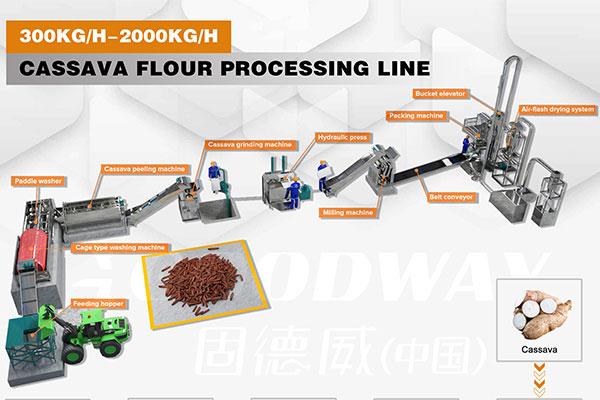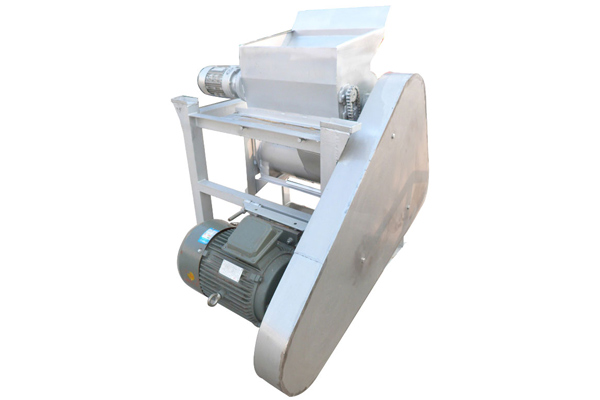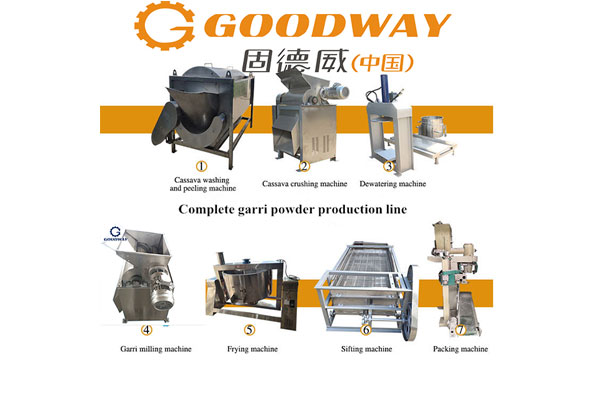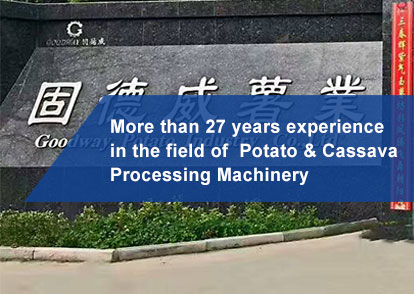For the cassava starch processing , the starch yield is closely related to the economic benefits of the processing. There are many factors that affect the starch yield, including the starch content of raw materials, processing technology, crushing particle size, screening level, acid quality, temperature, water quality, equipment, and operating procedures. It is necessary to thoroughly understand and actively take preventive measures.
Raw materials for cassava starch processing
Variety
The starch content of potato block for high-starch special varieties is generally between 22% and 26%, while that of edible and starch-concurrent varieties is between 18% and 22%, and that of edible and feed varieties is only between 10% and 20%. Some people who are new to starch processing blindly purchase raw materials without knowing these knowledge, without distinguishing varieties, only looking at the size and appearance, resulting in a low starch rate of the potato block, causing low powder output and loss to the enterprise.
Therefore, high-starch varieties must be chosen, and it is best to establish a potato raw material production base, sign a contract with the enterprise, implement unified varieties and standardized cultivation, and purchase products by the enterprise.
Storage period
The starch content of potato blocks is highest when just harvested, and the longer the storage time, the larger the proportion of starch is converted into sugar, and the lower the powder output will be. After 20 days of storage in sweet potato storage pits, the temperature is still relatively high, and the respiration of potato blocks is quite strong. Part of the starch is converted into sugar and consumed as respiratory substrate; at the same time, the released heat makes the pit temperature remain high, aggravating the harmful respiration of potato blocks.
Therefore, in the early stage of storage, the pit temperature should be kept as low as possible, not exceeding 15℃, but not lower than 9℃. If you want to store fresh potatoes during the potato harvest season and delay processing, you should pay attention to three points: one is to choose anti-glycation potato varieties; the other is to check the quality of raw materials to ensure quality; and the third is to ensure that the warehouse has a suitable temperature and minimize the rot rate during storage.
Raw material quality
In fresh potato raw materials, if the proportion of potatoes affected by diseases, insects, water damage, and soil on potatoes is too large; in dried potato raw materials, if the proportion of potatoes affected by diseases, insect damage, and mixed with soil and impurities is too large, and the moisture content is too high, the powder output rate will be reduced.
Therefore, in the production process of potato raw materials, attention should be paid to ensuring and improving product quality, and strict quality control should be carried out when purchasing.
Crushing particle size of cassava starch processing
If crushing is too coarse, the starch in the uncrushed cells is difficult to separate, affecting starch yield; if crushing is too fine, the temperature of the raw material will rise instantaneously, and some starch is easy to gelatinize, affecting separation.
Crushing and filtering are important links that affect the extraction rate of potato starch. Therefore, when selecting cassava starch processing, it is important to choose professional and efficient potato milling machine, which can help significantly improve the powder output rate and increase the purity of free starch filtration.
Blocking degree of screening nets in cassava starch processing
The blockage degree of screening nets has a great influence on the starch extraction rate, and it is easily overlooked by people. Proteins and pectin can form colloids that block screen holes when absorbing water. When more than 60% of the screen holes are blocked, the separation of starch is affected. When the blockage is slight, the starch extraction rate will decrease by 5% to 15%, and when the blockage is severe, the extraction rate will decrease by more than 40%. Therefore, the screening net should be cleaned or replaced regularly.
Due to the biological characteristics of the blocking substances, only water is not sufficient to remove them. The protein of potatoes is mainly globulin, which is insoluble in water and soluble in 2% neutral salt solution. Therefore, it is easier to clean the blocked screening net with 2% neutral salt solution.

 EN
EN
 fr
fr  es
es  it
it  pt
pt 







